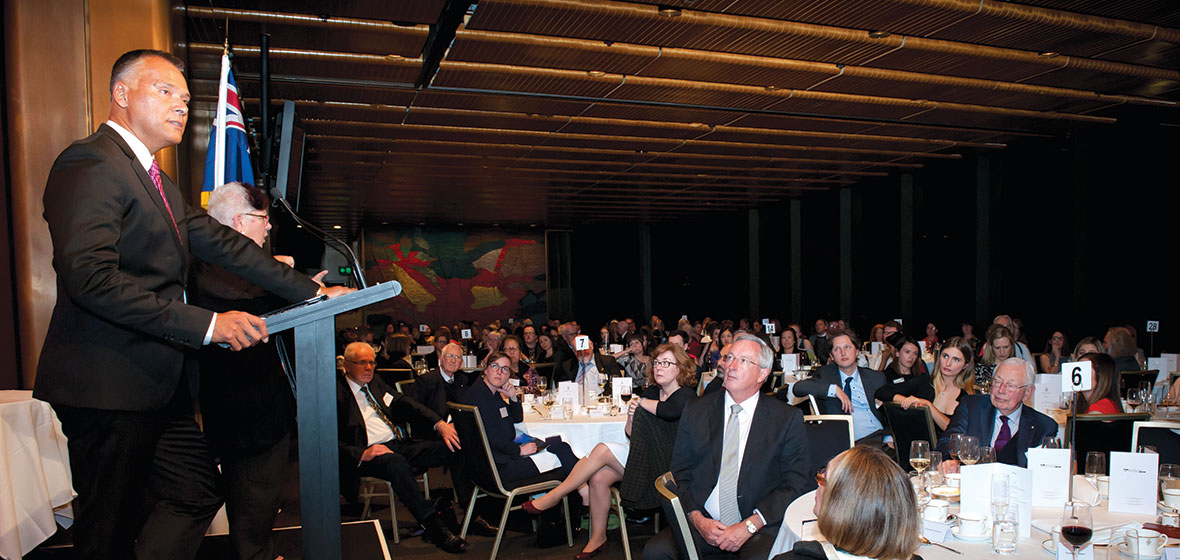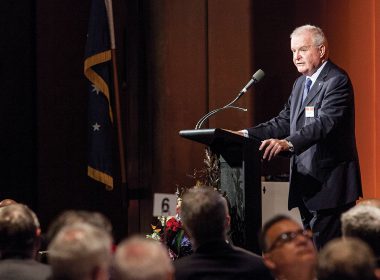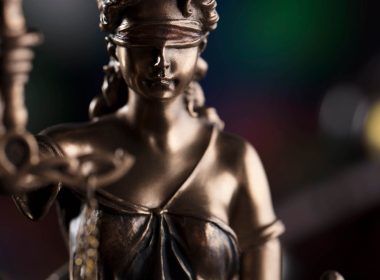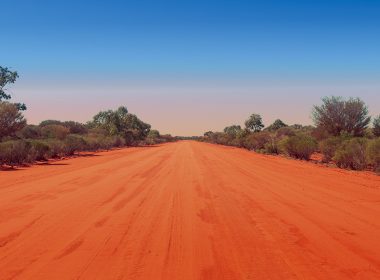The nation has unfinished business when it comes to how it treats Indigenous people and a treaty is just one important part of this.
There are moments in life that are truly breathtaking: moments of awe and beauty that force you to reconsider your place in the universe. For me, one of those moments was staring up at the ceiling of the Sistine Chapel in the Vatican. Those who have been there will recall Michelangelo’s depiction of Adam, one of the scenes of Genesis that he’d laboured for four years to produce. The centrepiece is Adam reaching for the hand of God. Between them, the very spark of life, and yet they don’t touch. It is a reminder that God and man are not on the same level.
Yet it spoke to me, too, of a distance between us all. I’ve long pondered that distance. What is it that separates us even as we reach for each other? To me it is always seemed that we live in that small empty space between the certainty of ourselves and the possibility of belonging. We fill that space with history, identity, hate, myth, longing, love, resentment, memory. We reach for each other and yet we still don’t touch.
I’m interested in that space between us here, in Australia: a space between white, and black, a space between the first peoples of this continent and all who have come since. It has been a void, a space of emptiness, and silence.
The anthropologist W.E.H. Stanner, writing in the 1960s, dubbed this “The Great Australian Silence”. He called it, “A cult of forgetting practised on a national scale. It is the silence that swallows our history; that leaves blank whole chapters; stories that if written would have told of the darkest times of our past”.
We are all products of that silence. What we have hidden or denied, what we have secretly clung to. What historian Henry Reynolds once called “This whispering in our hearts”.
We are here tonight to celebrate justice; and I’m reminded of something the philosopher Jacques Derrida once said: “The opposite of forgetting is not remembering. The opposite of forgetting is justice.” This has been a year for me where I’ve pondered that quote. It is a year when I’ve remembered the past of my own family, of my own people.
I was plunged unexpectedly into this by a speech that I gave as part of a debate that pondered the statement “Racism is destroying the Australian dream”. I argued that to Indigenous people, racism lay at the very heart of the Australian dream. It was there at the birth of the nation, at the moment of British settlement. I argued that to Indigenous people it lay in the doctrine of terra nullius, which rendered this an empty land, extinguished our rights, at a stroke at least 60,000 years of occupation and culture and song, and dance, and politics, and economy, and family, counted for nothing. But I wondered something else. Are we ultimately better than the worst of our history? How do we fill the space between us, the space of Michelangelo’s Adam, and God?
I published a book this year, Talking To My Country, where I looked to rescue the lost voices of my family. It told the story of my great grandfather, Wilfred Johnson, who was jailed for speaking his language to his grandson, my father. It told of my great aunt, Eunice Grant, taken from her family to a cold girls’ home on a lonely hill in Cootamundra, where she slept in a dormitory with other Aboriginal girls under a sign that read “Think White, Act White, Be White”.
I wrote of people forced from their lands of frontier violence and massacre; of people herded onto missions as the pillow was being smoothed for our eventual extinction.
But I also spoke of love: a love of family, a love of country, and a love between black and white that has made me.
I am the product, too, of an Irish rebel convict sent here in chains in 1810 who died the wealthiest Irish Catholic in the colonies, who left behind two families, one white and a secret black family. One became Australian, the other became outcasts. I wrote of how I have met our other white relatives and how, like this country, we bend to each other even when we don’t quite touch.
I’ve been surprised this year, as I’ve spoken to people around the country, at the reaction to what I’ve said, and written, of how some have accused me of having a nostalgia for injustice, how others have seized on the stories of loss and suffering as their own stories, too. At times I’ve felt like the patron saint of the victimised.
Both interpretations are wrong. Rather than long for a wronged past, my life has been about freeing myself from it. I have no desire to be a hostage to history. Rather than perpetuating victimhood, I reject it. I reject it because it has never been the story of my family. Indeed, it is not the story of Indigenous Australia. Ours is a story rich in resilience and survival.
The philosopher Paul Ricoeur once wrote, “We have a duty to remember. Because by remembering we stop the victims being buried twice”. And that is true. But it is also so easy to build a fortress of suffering, to turn history into memory and choose only that which best suits your story. Where remembrance is concerned, German philosopher Friedrich Nietzsche once said, “There are no facts, only interpretations”.
I am interested in an Australia that speaks to us all, where Indigenous identity does not frame itself around victimhood, does not cling to grievance, and where the nation can release itself from the darkness of its past.
STAN GRANT
We need to divide the world it seems, into a Manichean black and white, a good versus evil. Todorov, in his book Hope and Memory said, “History tends toward the grave”. Good and evil are never separate from one another. Todorov writes about the perverse power of victimhood.
“If history is written by the victors in the 20th century, people have campaigned for the history of the losers, too: the victors, the subjugated and the vanquished,” he wrote.
Todorov says victimhood became an inspiration. In this way it gave ground to complaint, to protest to make demands or to cut off relations entirely. Victims cling to injustice while having no intention of throwing off the moral and political advantages it can bring.
When I ponder those words I remember reporting in Northern Ireland at the height of the Troubles that pitted Protestants against Catholics and being told by someone that there were many people who didn’t really want a united Ireland, they just wanted to fight for it.
Now this sense of victimhood or reclaiming your history as a sense of justice was often a response to tyranny, the power of totalitarian regimes to silence people, to steal history and identity. Todorov argues that history is tragedy in which we all play a part. It is far better to look at each of ourselves and to see in us all, the propensity for evil, or good.
But how do we move beyond the silence and then the confession?
Avishai Margalit, the Jewish philosopher, pondered forgiveness in his book The Ethics of Memory. He said: “As long as the offended retains any scar from the injury, forgiveness can never be complete”.
I think of that now when I look at the plight of Indigenous people today. The scars are all too visible. They’re there in the litany of misery that tells us Indigenous people die 10 years younger than the rest of Australians, have the highest per capita rates of suicide, and mental illness, the highest incarceration rates. In some states, the highest incarceration rates anywhere in the world: the worst housing, the highest unemployment, or worst education outcomes.
We have had the apology. We have begun to tell our stories and pierce that Australian Silence, but still there is that space between us.
I recall sitting with my father, earlier this year, at his home in Narrandera in NSW. We were watching television as Australians made their pilgrimage to the fields of France to lay wreaths at white crosses remembering the fallen.
And my father said his uncle lay there, too: his father’s older brother. And he said, “I wonder why it is that Australians can go so far from our shores to honour their dead, and we still can’t honour the fallen Indigenous people who fought for this country”.
Barely five kilometres from where my father lives is a creek called Poison Waterholes Creek, where in the 1830s the settlers doused the water with arsenic, killing the local Wiradjuri people. Some fled to an island in the Murrumbidgee River where they were hunted down and shot. Today that island is called Murdering Island.
But we don’t get a chance to lay wreaths at Poison Waterholes Creek, or Murdering Island, because they are still swallowed by “The Great Australian Silence”. These are the things of our unfinished business.
Why can we, in our great war memorial in Canberra, commemorate those who have lost their lives in foreign lands fighting for this country, and still not write on those same walls of remembrance the names of Indigenous people who died protecting their country in the frontier: our unfinished business. This is the hangover of the Australian settlement.
Our constitution speaks to these things; a constitution that still contains rare provisions, allows for the passing of laws specifically for any race of people that have been used to pass laws for Aboriginal people and not always to our benefit.
There remains the unfinished business of treaty. Now some say, that a country can’t have a treaty with itself. Well, tell that to New Zealand or Canada, or the United States where they’ve a long tradition of treaties; treaties, yes, fought over and dishonoured, but treaties acknowledging what’s happened in that country.
Australia remains the only Commonwealth country still not to have a treaty. This is about the justice of remembrance. It is about bringing clarity. It is about burying the enmity of the past by acknowledging Aboriginal people in our constitution, by framing treaties that acknowledge and move us on from our past.
When I ponder a treaty or constitutional recognition, I think of the words of John Stuart Mill, when he said how “a nation can soften the extreme form and fill up the interval between us”. Soften the extreme form and fill up the interval between us. That space that exists between us: that space that exists between the hand of Adam and the hand of God on the Sistine Chapel. This is how we build a nation. How we find a place for us all; complete the Commonwealth.
I am interested in an Australia that speaks to us all, where Indigenous identity does not frame itself around victimhood, does not cling to grievance, and where the nation can release itself from the darkness of its past.
I’ve seen countries that have failed to do this. I’ve spent a lifetime reporting on countries that are still locked in old enmity and grievance: the blood-soaked borders of the Middle East, the disputed land of Ukraine and Crimea, the cold war rogue state of North Korea. China, that still speaks of 100 years of humiliation by foreign powers; that threatens to ignite a potential new conflict in our time: old enmity between China and Japan and the disputed territorial borders of the South China Sea.
I’ve seen this in the conflict that pits Sunni against Shia, in the conflict that pitted Hutu against Tutsi in Rwanda, Hindu against Muslim in the existential nuclear standoff between India and Pakistan.
Australia has a chance to escape that fate. To free ourselves from the darkness of our past so that we don’t meet each other across that divide of grievance: that the Australian Silence is filled up with our voices that speak a truth and speak to each other about the possibility of togetherness.
Earnest Renan, the French philosopher, once said that, “Nations are built on what they are prepared to forget” – what we are prepared to relinquish to find common ground.
Not what we are prepared to cling to, not histories that separate us and pit us against one another, but what we are prepared to give up to find a place with each other, and within each other. What are we prepared to give up in Australia to fill the space? That space between an outstretched black hand and an outstretched white hand. What are we prepared to give up to fill that space so that those hands can touch?




